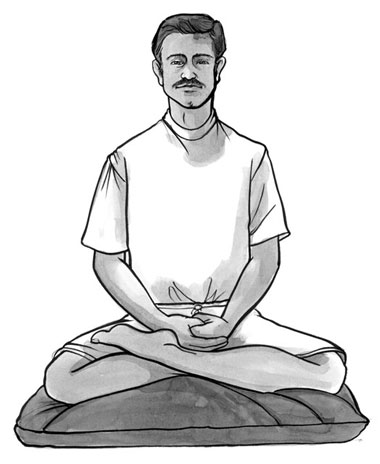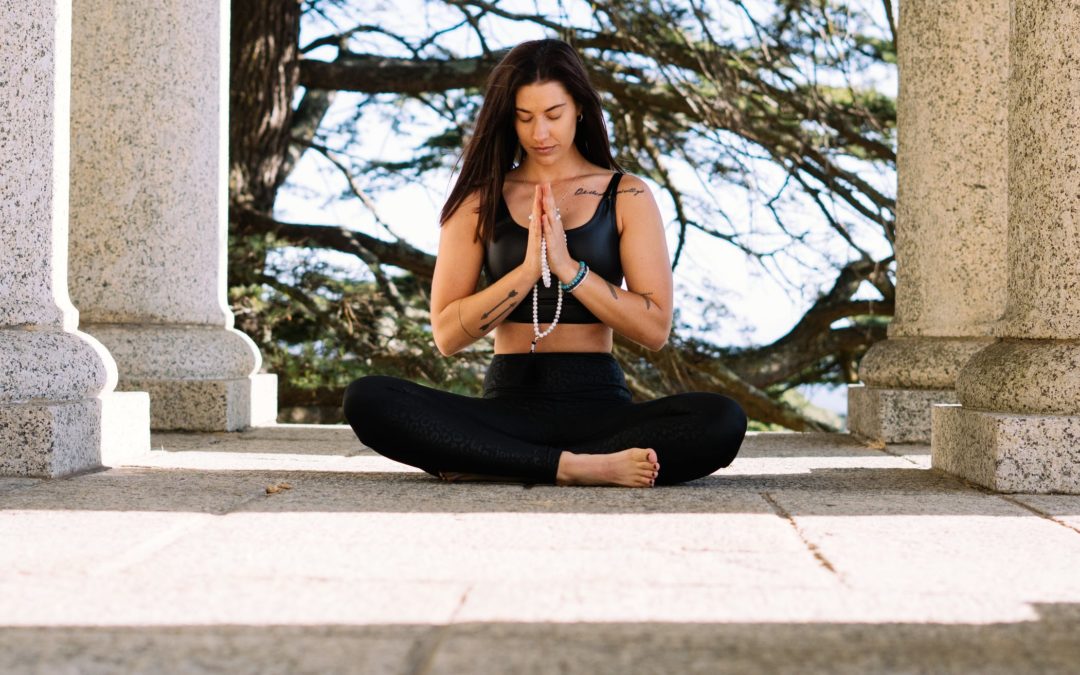By
The “100 Breaths Meditation” is a super easy exercise for improving your focus and awareness.
If you have no experience with meditation at all, this is a great place to start – the “100 Breaths Meditation” is one of the very first meditations I learned, and it’s still an exercise I revisit on a frequent basis (almost a decade later!)
The main idea behind the “100 Breaths Meditation” is to focus on the sensations of your breathing, while counting down from “100” → “0.” One space for each breath = 100 breaths total.
The best part about this meditation is that it is simple and only takes about 10 minutes total. So it’s something you can easily practice in the morning, or while sitting on the bus/train, or in the waiting room. You don’t need anything but you and your breath.
Here’s how to do it.
Choose a Posture
Posture can be a very important but underrated aspect to meditation. A healthy posture can make a huge difference when it comes to minimizing discomfort or pain, and avoid falling asleep (one of the most common problems when starting meditation)
Sit on a comfortable cushion or rug on the floor. Don’t have your back propped up by anything. Try your best to keep your spine straight and head level.
The “Half Lotus” position is the most common sitting posture for meditation. It’s when you have your left foot above your right leg, and hands folded a couple inches below the navel (see below).

The “Full Lotus” position is when you have both feet above both legs.
If you find either of these positions too uncomfortable, you can choose to sit in the traditional cross-legged form, where both feet are tucked under the knees or thighs. Choose whatever feels best.
I recommend closing your eyes for the meditation (to avoid distractions), but you can technically do this exercise with your eyes open as well.
Don’t over-think your posture too much. Just be aware of it and give yourself time to experiment with new things when first starting out.
100 Breaths Meditation: Step-by-Step Instructions
Now that you have a posture, let’s get into the core of the exercise.
The main goal of the “100 Breaths Meditation” is to focus on the sensations of your breathing, while ignoring all distractions from your mind, body, or environment.
As the name suggests, you will follow your breath for 100 breaths, counting down from “100” → “0.”
Let your breathing happen naturally, without intention or force. Don’t try to breath faster or slower, deeper or shallower; just let your breathing unfold, and remain focused on the sensations of each breath.
Inhale and exhale. Inhale and exhale.
On each exhale, use your internal dialogue to guide the counting from “100, 99, 98, 97….etc.” until you’ve reached 0.
Inhale and exhale. Inhale and exhale.
Every time you get distracted by something (a thought or sensation), just make a mental note of these in a non-judgmental tone. Say to yourself, “I got distracted” – and then keep going back to the exercise until it’s completed.
Inhale and exhale. Inhale and exhale.
Open your eyes. You’re done.
Monkey Mind: The Nature of Distractions
Distractions are a natural part of the meditation – and life in general.
In today’s world, everything is fighting for our attention and in many ways we’ve become more distracted and scatterbrained than ever before.
If you practice the “100 Breaths Meditation,” you will likely be very surprised by just how busy and distracted your mind really is.
In Zen philosophy, this is sometimes referred to as “Monkey Mind” – the feeling of being restless, unsettled, inconsistent, etc. It’s the opposite of a “Still Mind” – a mind that is focused and concentrated on the present moment.
The “100 Breaths Meditation” will teach you how to better quiet and manage your “Monkey Mind.” Of course, distractions will still happen every now and then, but you’ll be better able to recover and re-focus when they happen.
With practice, you’ll also learn how to maintain your focus for longer periods of time without being distracted. And this prolonged focus can be a gateway to deeper stages of meditation, include states that bring relaxation, bliss, and equanimity.
Sometimes once I reach “0” during the “100 Breaths Meditation,” I continue to watch the sensations of my breathing while no longer counting. I just become “one” with the experience of breathing.
Breathing Is Like an Anchor
Metaphors can be very helpful in illustrating the meditative process when it can be hard to express things in words.
I often think of our breathing as an “anchor to a ship.” No matter how far away our minds drift, we can always bring awareness back to the breath to keep ourselves centered in the present moment.

Breathing is the cornerstone of life; and as conscious beings, it represents a direct connection between ourselves and the external world.
Wherever you are, the breath is never too far – this makes it one of the best and most reliable focal points for meditation.
If you’d like to learn more about meditation and mental health, consider reaching out to me for coaching. I love helping people explore their minds and learn more about themselves!
A True love for health


Recent Comments